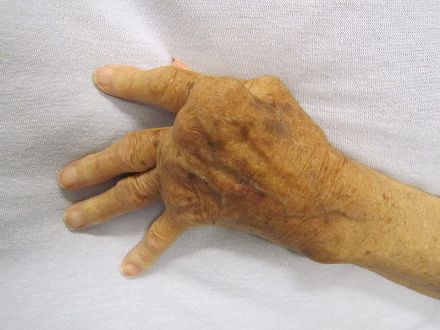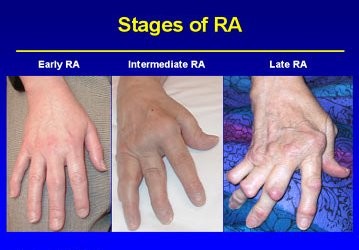Hand Surgery for Rheumatoid Arthritis
Rheumatoid arthritis causes inflammation and destruction of the cartilage in the joints of the wrist and hand, leading to pain, swelling, and deformity. Rheumatoid arthritis can also lead to swelling of the ligaments and tendons, causing instability and deformation of the joints.
The classic features of rheumatoid arthritis include nodules along the fingers or elbow, angulation or collapse of the fingers, inability to straighten the finger due to tendon rupture, and prominence or collapse of the wrist bones.
 |
| A hand affected by rheumatoid arthritis Courtesy of James Heilman, MD, licensed under a Creative Commons Attribution-Share Alike 3.0 Unported license. |
 |
|
Stages of Rheumatoid arthritis in the hand. |
The treatment of rheumatoid arthritis focuses on decreasing the inflammation, reducing pain, and restoring function. Optimum treatment involves a team approach, including the patient's primary care physician, a rheumatologist, a hand surgeon, and therapists. The rheumatologist will prescribe and manage medication appropriate to the disease process.
Therapists will provide instruction, splints, and exercises to maximize hand function while protecting joints and tendons.The hand surgeon will provide operations to decrease pain while maximizing function, including tendon reconstructions, joint fusions, and joint replacements.
Procedures are also offered to patients to prevent progression of the disease, through removal of inflamed tissue around the tendons or joints. Each patient's needs are unique, and the optimum treatment is best determined after careful discussion between the surgeon and patient.
